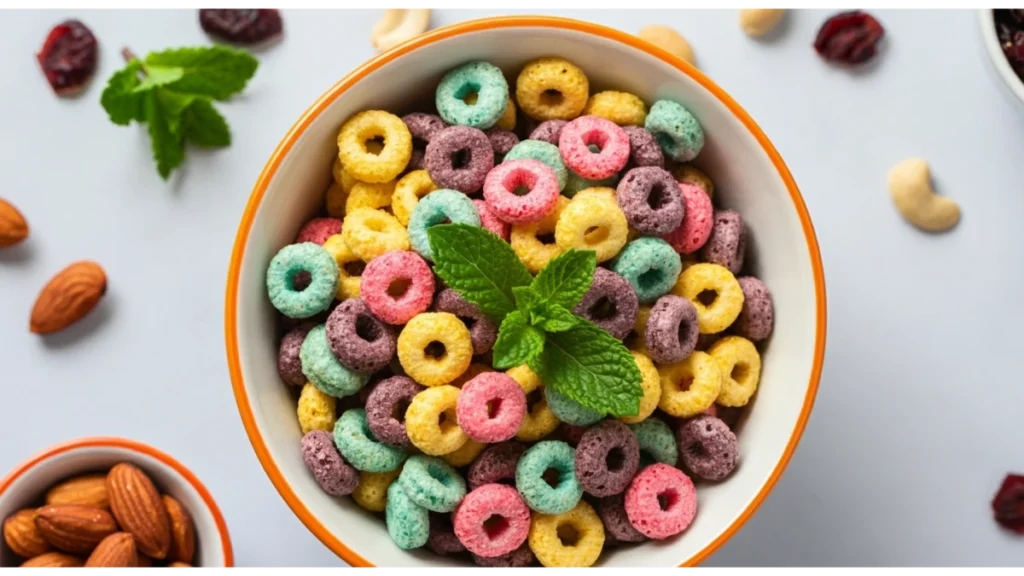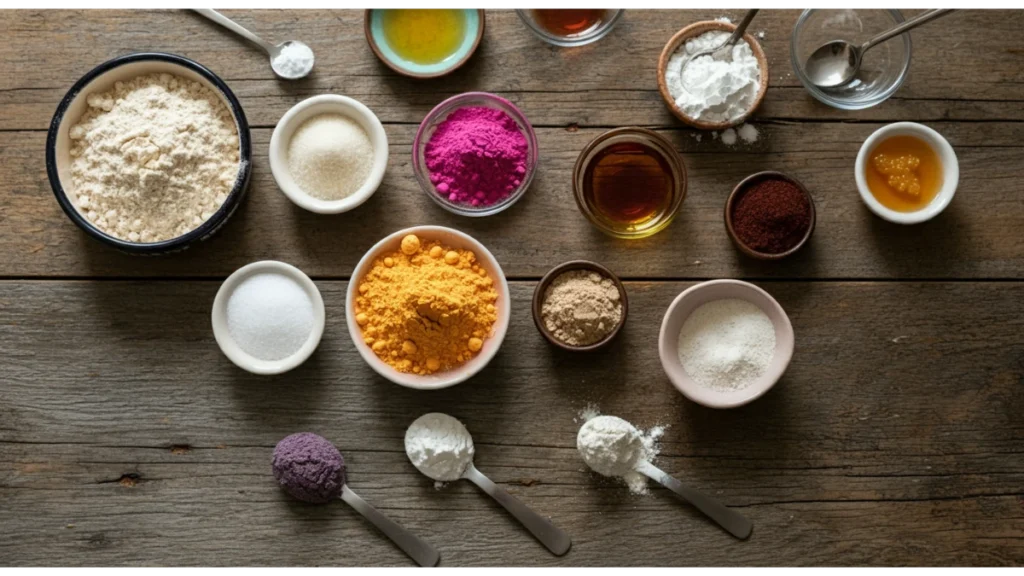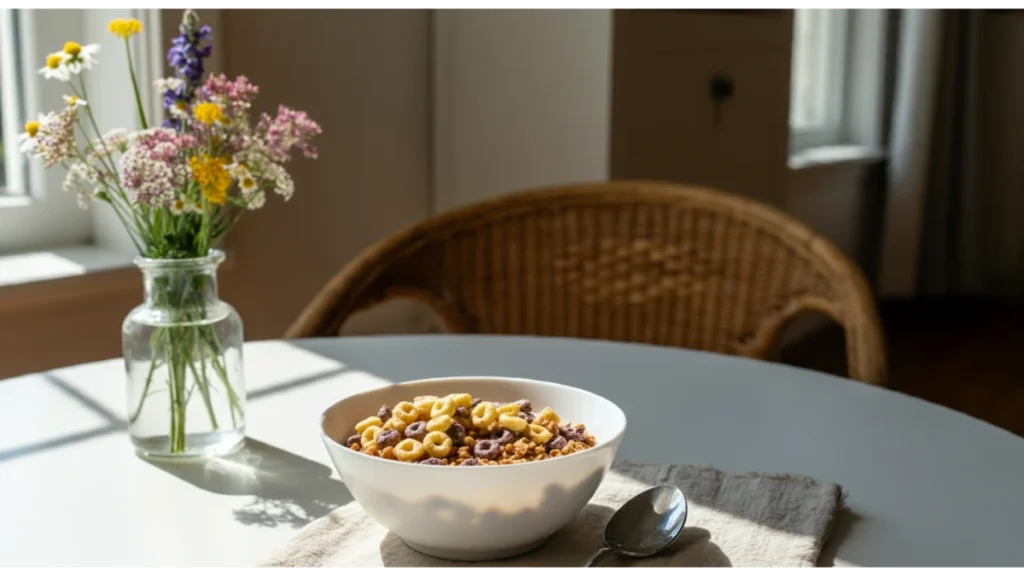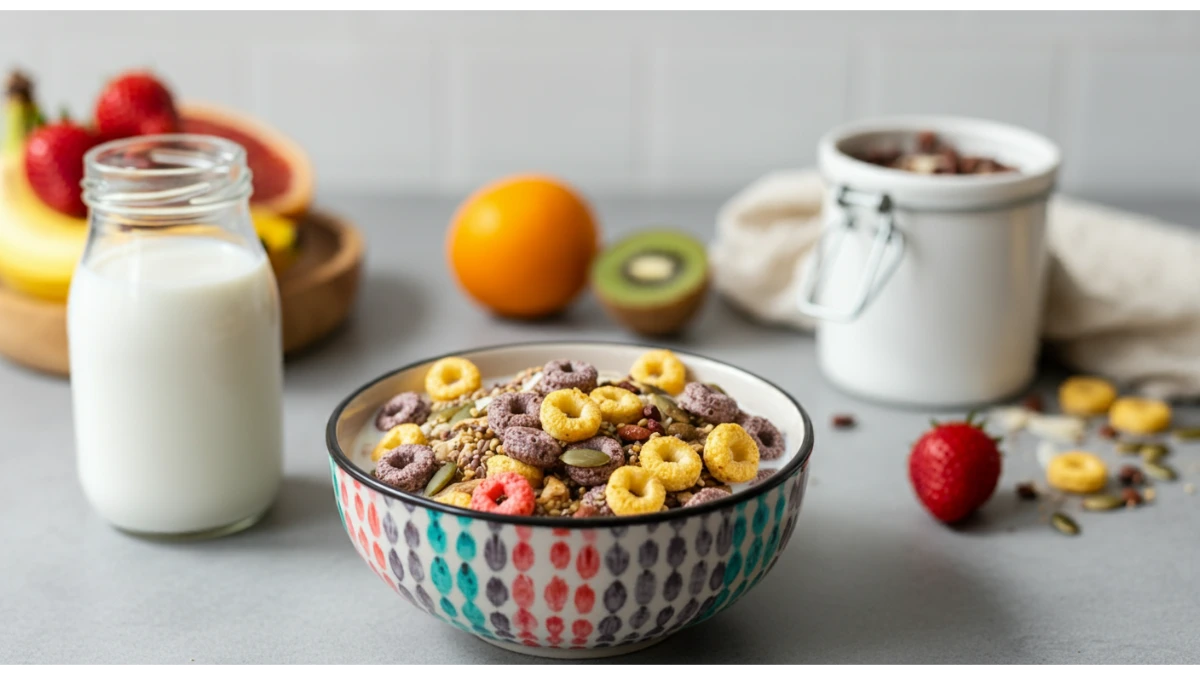The Truth Exposed: Are Froot Loops Really Vegan-Friendly?
As a lover of breakfast cereals, you’ve probably wondered, “Are Froot Loops vegan?” This colorful and sugary cereal has been a staple in many households for years, but its ingredients might not be as straightforward as they seem. In this article, we’ll dive deep into the world of Froot Loops, exploring their ingredients, potential animal-derived components, and whether they fit into a vegan lifestyle. Whether you’re a long-time vegan or just curious about your cereal choices, this guide will provide you with all the information you need to make an informed decision.
Cereal has long been a go-to breakfast option for many people, offering convenience and a quick source of energy to start the day. Froot Loops, with their bright colors and sweet taste, have captured the hearts of both children and adults alike. However, as the popularity of plant-based diets continues to rise, it’s essential to scrutinize the ingredients list of our favorite foods. This article will not only answer the burning question about Froot Loops’ vegan status but also explore the broader implications of consuming cereals in a vegan diet.
Key Aspects of Froot Loops

Froot Loops, manufactured by Kellogg’s, are known for their vibrant colors and fruity flavors. The cereal is primarily made from corn, sugar, and various artificial ingredients that contribute to its signature taste and appearance. However, the question remains: are they suitable for a vegan diet? To answer this, we must look closely at their ingredients list, which includes corn flour, sugar, and artificial colors. While some of these components are plant-based, others raise concerns for strict vegans.
Understanding the ingredients is crucial when determining whether a product is vegan. Many people assume that if a product is plant-based, it is automatically suitable for vegans. However, this is not always the case, as some ingredients may be derived from animals or processed using animal products.
Ingredients Breakdown

Let’s take a closer look at the ingredients typically found in Froot Loops:
- Corn Flour: The primary ingredient, corn flour, is derived from corn and is generally considered vegan. It provides the base for the cereal and contributes to its texture.
- Sugar: While sugar is plant-derived, the refining process can sometimes involve bone char, which is made from animal bones. This practice raises ethical concerns for many vegans, leading to debates about whether sugar should be considered vegan.
- Modified Food Starch: This ingredient is often derived from corn or potatoes and is used as a thickening agent. It is usually vegan, but it’s essential to check the source.
- Artificial Colors: Froot Loops contain several artificial colors, such as Red 40 and Yellow 6. While these colors are synthetic and do not come from animals, some people prefer to avoid them due to potential health concerns and ethical considerations related to animal testing.
- Natural Flavors: The term “natural flavors” can be ambiguous, as it may include substances derived from both plant and animal sources. Without further clarification, it’s challenging to determine their vegan status.
- Vitamins and Minerals: Froot Loops are fortified with various vitamins and minerals, such as iron and vitamin C. These nutrients are typically synthetic and do not pose a vegan concern.
Are Froot Loops Vegan?
Given the breakdown of ingredients, the answer to whether Froot Loops are vegan is not straightforward. While the primary ingredients are plant-based, the presence of sugar and the ambiguity surrounding natural flavors can be problematic for strict vegans. If you adhere to a strict vegan lifestyle, you may want to consider these factors before including Froot Loops in your diet.
The Vegan Perspective
For many vegans, the definition of what constitutes a vegan product extends beyond just the absence of animal ingredients. It also encompasses ethical considerations regarding how ingredients are sourced and processed. This perspective leads to a more nuanced discussion about products like Froot Loops.
- Ethical Concerns: The use of bone char in sugar refining is a significant ethical issue for many vegans. Even if the final product does not contain animal ingredients, the processing methods can conflict with vegan principles.
- Health Considerations: Some vegans choose to avoid processed foods with artificial colors and flavors due to potential health risks. Froot Loops, being a highly processed cereal, may not align with the health-conscious choices that many vegans strive for.
- Environmental Impact: The environmental implications of food production are another consideration for vegans. While Froot Loops may not directly contribute to animal suffering, the agricultural practices involved in producing corn and sugar can have environmental consequences.
Alternatives to Froot Loops
If you’re looking for vegan-friendly alternatives to Froot Loops, there are several options available that offer similar flavors and textures without the ethical concerns. Here are a few suggestions:
- Nature’s Path Organic Cereals: This brand offers a variety of organic cereals that are free from artificial colors and flavors. Their cereals are often made with whole grains and natural sweeteners, making them a healthier choice.
- Cinnamon Toast Crunch: While not all varieties are vegan, some versions of this popular cereal can be found without animal-derived ingredients. Always check the label to ensure it aligns with your dietary preferences.
- Cheerios: Original Cheerios are generally considered vegan, as they are made from whole grain oats and do not contain any animal-derived ingredients. They can be a great base for adding your favorite fruits or nuts.
- Kashi Go Crunch: Kashi offers a range of cereals made with whole grains and plant-based ingredients. Their products are often high in protein and fiber, making them a nutritious option.
- Homemade Fruity Cereal: If you’re feeling adventurous, consider making your own fruity cereal at home. Combine cornflakes with dried fruits, nuts, and seeds for a customizable breakfast option that meets your dietary needs.
Step-by-Step Instructions to Make a Vegan-Friendly Fruity Cereal
While you can’t make Froot Loops from scratch at home due to their unique processing and ingredients, you can create a similar fruity cereal experience. Here’s how:
- Gather Ingredients: Collect the following ingredients:
- Cornflakes (check for vegan certification)
- Dried fruits (such as raisins, cranberries, or banana chips)
- Nuts (like almonds or walnuts)
- Natural sweeteners (like agave syrup or maple syrup)
- Optional: spices like cinnamon or nutmeg for added flavor
- Mixing: In a large bowl, combine the cornflakes with your choice of dried fruits and nuts. This combination will provide sweetness, crunch, and texture.
- Sweetening: Drizzle a small amount of agave syrup or maple syrup over the mixture for added flavor. Mix well to ensure even distribution.
- Spicing It Up: If desired, sprinkle a pinch of cinnamon or nutmeg over the mixture for a warm, comforting flavor.
- Enjoy: Serve your homemade fruity cereal with your choice of plant-based milk (such as almond, oat, or soy milk) for a delicious and nutritious breakfast.
Nutritional Value
When considering the nutritional value of Froot Loops and their alternatives, it’s essential to look at the benefits of the ingredients used. Here’s a breakdown of the nutritional value of the homemade fruity cereal:
| Ingredient | Benefits |
|---|---|
| Cornflakes | Source of carbohydrates, low in fat |
| Dried fruits | Packed with vitamins, minerals, and fiber; natural sweetness |
| Nuts | Rich in healthy fats, protein, and fiber; contributes to satiety |
| Agave syrup | Natural sweetener with a lower glycemic index than refined sugar |
Benefits of Froot Loops

While Froot Loops may not be the healthiest option, they offer some benefits, such as quick energy from the sugar and a fun, colorful breakfast experience for kids. However, it’s essential to balance them with more nutritious foods.
- Quick Energy: The high sugar content in Froot Loops provides a quick source of energy, making them a convenient option for busy mornings.
- Appeal to Children: The bright colors and fruity flavors make Froot Loops appealing to children, which can encourage them to eat breakfast.
- Versatile Use: Froot Loops can be used in various recipes, such as dessert bars or as a topping for yogurt, adding a fun twist to your meals.
Overcoming Challenges
If you’re concerned about the sugar content or artificial colors, consider mixing Froot Loops with healthier cereals or adding fresh fruits to enhance the nutritional value. Here are some practical tips to overcome common challenges:
- Mixing with Healthier Options: Combine Froot Loops with whole grain cereals or oatmeal to reduce sugar intake while maintaining flavor and texture.
- Adding Fresh Fruits: Incorporate fresh fruits like berries, bananas, or sliced apples to increase the nutritional value and add natural sweetness.
- Portion Control: Be mindful of portion sizes. Enjoying Froot Loops in moderation can help balance your diet while still indulging in your favorite cereal.
Future Trends in Vegan Breakfast Options
As consumers become more health-conscious, there is a growing trend towards cereals that are free from artificial colors and excessive sugars. Brands are increasingly offering vegan-friendly options that cater to this demand. Here are some trends to watch:
- Clean Label Products: More brands are focusing on transparency in their ingredient lists, offering products with minimal processing and no artificial additives.
- Plant-Based Innovations: The rise of plant-based diets has led to the development of innovative breakfast options, including cereals made from legumes, nuts, and seeds.
- Sustainable Sourcing: As environmental awareness grows, consumers are seeking products that prioritize sustainable sourcing and ethical production practices.
- Functional Foods: Many brands are incorporating functional ingredients, such as probiotics, superfoods, and added protein, to enhance the nutritional profile of their cereals.
Tips and Tricks Section
To make the most of your breakfast cereal experience, consider these helpful tips:
- Enhance Flavor: Add a sprinkle of cinnamon or nutmeg for a warm flavor that complements the sweetness of the cereal.
- Storage: Keep your cereal in an airtight container to maintain freshness and prevent staleness.
- Experiment with Milk: Try different plant-based milks, such as almond, oat, or coconut milk, to find the flavor that best suits your taste.
- Make It a Meal: Transform your cereal into a more filling meal by adding protein sources like nuts, seeds, or nut butter.
Variations and Adaptations
If you’re looking for alternatives to Froot Loops that fit a vegan diet, consider:
- Cheerios: Original Cheerios are generally considered vegan, as they are made from whole grain oats and do not contain any animal-derived ingredients. They can be a great base for adding your favorite fruits or nuts.
- Kashi Go Crunch: Kashi offers a range of cereals made with whole grains and plant-based ingredients. Their products are often high in protein and fiber, making them a nutritious option.
- Special K: Some varieties of Special K are vegan-friendly, but it’s essential to check the ingredient list for any non-vegan components.
- Homemade Granola: Making your own granola allows you to control the ingredients and avoid any unwanted additives. Combine oats, nuts, seeds, and dried fruits for a delicious and nutritious breakfast option.
- Puffed Rice or Corn: These cereals are often simple and free from artificial ingredients, providing a light and crunchy option for breakfast.
FAQs Section
Q: Are Froot Loops suitable for a vegan diet?
A: Froot Loops contain sugar and artificial colors, which may not align with all vegan standards. It’s essential to read labels and make informed choices.
Q: What are some vegan alternatives to Froot Loops?
A: Look for cereals made with whole grains and natural sweeteners, such as Cheerios, Nature’s Path Organic Cereals, or homemade granola.
Q: Can I store Froot Loops for a long time?
A: Yes, keep them in a cool, dry place, and they should last several months. However, be mindful of the expiration date on the packaging.
Q: What are the health concerns associated with Froot Loops?
A: Froot Loops are high in sugar and contain artificial colors, which some people prefer to avoid due to potential health risks.
Q: How can I make Froot Loops healthier?
A: Mix Froot Loops with healthier cereals, add fresh fruits, and be mindful of portion sizes to create a more balanced breakfast.
Conclusion
In conclusion, while Froot Loops may contain ingredients that are technically vegan, the presence of sugar and artificial colors raises questions about their suitability for strict vegans. It’s essential to read labels and make informed choices based on your dietary preferences. If you’re looking for healthier alternatives, consider exploring the myriad of vegan-friendly cereals available today.
Ultimately, the decision to include Froot Loops in your diet depends on your personal values and dietary goals. Whether you choose to indulge in this colorful cereal or opt for a more wholesome alternative, the key is to enjoy your breakfast while staying true to your lifestyle. Share your thoughts in the comments below, and don’t forget to subscribe for more insights into vegan living!

